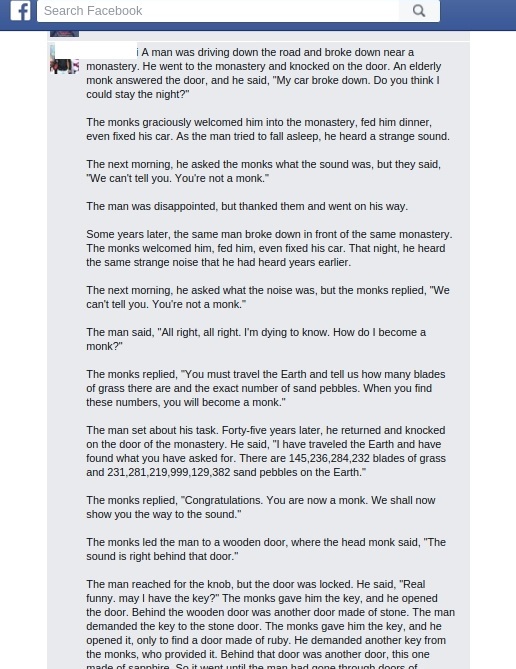Blog
5 Ways Content Marketing is Gradually Encapsulating SEO

It’s no secret that content marketing has penetrated deeper into SEO.
But how deep?
That we’ll explore in this article. After reading it, you can review your site and verify if on-page best practices have been followed and decide whether any changes are required.
Here’s how quality content is changing each aspect of SEO:
Link building
The number of links is no longer important. The quality of links is all that matters now. The recommended approach is having top-quality links pointing to your site.
What does top-quality mean?
Top quality means the links are coming from sites that get sufficient number of visits and page views, rank top on Google against certain keywords, have volumes of user-friendly content on them and have high domain authority and PageRank (PR).
Obtaining these links means your content must be of quality and contain relevant information. The high value sites have achieved their rankings for a reason, and as such they only post high quality content. To do otherwise would be detrimental to their success. Google values such links, so do users sifting through search results, as such contents answer many of their questions and/or provides the accurate information they were seeking.
There’s no recommended method of link building other than the process described above, which basically implys that content marketing is now the only legitimate way to build links.
Social SEO
This is a fusion between social media and SEO. Search and social optimization have been blending for a while now, and now social SEO is a phenomenon. The best part that I love about it (And I am sure you’ll love it too) is it reduces the workload as doing SEO and social media marketing separately is time-consuming and resource-intensive.
Content marketing plays a huge role in social SEO. For example, Facebook posts initially tended to be on the shorter side. But more recently you’ll notice many FB posts that are quite long. Some of them are stories, some are riddles, some are personal memoirs. See the one below:

It’s a short story posted by a Facebook user. When a brand posts such stories from its Facebook page, it notices a sharp rise in user engagement. A clever marketer can even embed links in those stories.
Then there’s YouTube, the default platform for video marketing. YouTube can send enough traffic to a site and help it secure a top rank. It has been said that a comprehensive marketing plan across different social channels can save a marketer from spending thousands on SEO because Google adores links on social networks, especially if the posts containing those links register engagement.
Keyword optimization
Gone are the days when repeating a keyword a few times in the article and keeping to a fixed percentage of ‘density’ was considered as a keyword optimization technique. But now the definition of keyword optimization has changed.
This is perhaps one of the very few areas that have undergone wholesale changes over the last couple of years. In 2016, keyword optimization leans on content marketing because otherwise the requirements put forth by Hummingbird and Pigeon updates cannot be met.
What are the requirements?
- Adding semantic modifications
- Highlighting Local keywords
- Adding long tail keywords
Let’s say the original keyword is “Car repair services.” Its semantic variation would be “Auto repair shop.” Given the location of the business is Milwaukie, Wisconsin, the local keyword would be “Auto repair shop Milwaukie” or Car repair service Milwaukie.”
The last two keywords are long-tail as well. If you need one that’s even longer, then here’s one - “Auto problems repair shop in Milwaukie.” Only content marketers can bring so many variations of a keyword in an article.
Interlinking
Interlinking is more important for a site than links coming from other websites. Interlinking increases the PageRank (PR) of a site (Even though some hold PR is not important), it also decreases bounce rate and increase conversion rate.
Interlinking also helps content marketers project themselves as thought leaders because all the articles that are linked with each other have a thematic closeness and the readers get to read the previous articles of the author on the similar or related areas.
Some advice that an online marketer needs to follow are not making the template in Java or Flash as search engine bots can’t crawl those links and have breadcrumb navigation as it divides the content on the site into categories and subcategories. Through breadcrumb, content marketers can create content hierarchy, which is more important than technical hierarchy.
Image optimization
Image optimization best practices involve following content marketing guidelines. Local businesses can optimize the ALT tags for company logo and other brand images and come on Google’s ranking. It’s easier for them.
Before I explain why it’s easier for them, let me describe how content marketing overlaps with image optimization:
All images on the web are indexed by Google and the respective keywords that Google picks are actually the ALT tags, which means experimenting with ALT tags may bring a difference in ranking. Queries put by users in the image search are longer than standard search queries, meaning long-tail keywords are ideal to be used as ALT tags.
Now back to the question that I’ve raised. How content marketing is making it easy for local businesses to optimize images? When local businesses include their locations in the ALT tag, the odds of being picked by Google drastically goes up. Again, the inclusion should look natural and content marketing comes in useful for that.
Conclusion
Content marketing will play an even bigger role for SEO in the future. It’s difficult to predict how the future would be like (Still we’ll try that some other time) but understanding the five ways discussed here through which content marketing is encapsulating SEO may help you stay prepared for that day.
Image Courtesy: negativespace.co

Adam Frankel
Adam Frankel is President and CEO of Frankel Interactive, a leading South Florida digital agency specializing in custom websites development, ecommerce development and digital marketing. For over 15 years he's been working with businesses and government agencies to bring their organizations online in order to build brand awareness, communicate with stakeholders, generate leads and drive sales. His belief is that all businesses need to keep up with technological trends including the continual transition from desktop to mobile, search engine algorithms changes, and social media engagement. His goal is to help them implement strategies to successfully compete in an ever crowding digital marketplace. When he isn't touting the benefits of web-based marketing, he enjoys fishing and spending time on the waters surrounding Miami with family and friends.
